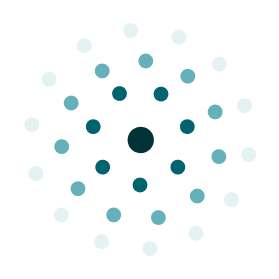According to recent LinkedIn research, companies leveraging AI in recruitment are witnessing a remarkable 27% reduction in cost-per-hire while simultaneously maintaining, and often improving, candidate quality. This isn't just a trend—it's becoming a competitive necessity.
As talent acquisition costs continue to spiral upward, with the average cost-per-hire reaching $4,700 according to SHRM data, forward-thinking organizations are discovering that AI in recruitment isn't just about efficiency—it's about survival in an increasingly competitive talent market. The question isn't whether your organization should adopt AI recruiting tools, but rather how quickly you can implement them to stay ahead of the curve.
The Real Cost Crisis in Traditional Recruitment
Understanding the Hidden Financial Burden
Traditional recruitment methods carry a staggering array of hidden costs that extend far beyond the obvious expenses like job board postings, recruiter salaries, and advertising fees. These concealed costs often represent the largest portion of your recruitment budget, yet many organizations lack comprehensive tracking systems to identify and address them.
The Iceberg Effect of Recruitment Costs
Manual resume screening represents one of the most significant hidden expenses. When hiring managers and HR professionals spend hours sifting through hundreds of applications, the cumulative cost becomes astronomical. Consider this: if a senior recruiter earning $75,000 annually spends 20 hours screening resumes for a single position, that's already $720 in screening costs alone—before any interviews or assessments begin.
Lengthy interview processes compound these expenses exponentially. Multiple interview rounds involving various stakeholders create a ripple effect of lost productivity. When five employees spend two hours each interviewing candidates for a position, and those employees have an average hourly rate of $50, that's $500 per candidate—multiply this by 10 candidates, and you're looking at $5,000 in interview costs for a single hire.
The Domino Effect of Poor Hiring Decisions
Perhaps the most devastating hidden cost comes from poor hiring decisions. The Society for Human Resource Management estimates that replacing a bad hire can cost anywhere from 50% to 200% of the employee's annual salary. For a $60,000 position, a single bad hire could cost your organization between $30,000 and $120,000 when factoring in separation costs, lost productivity, training expenses, and the cost of rehiring.
Additional Hidden Costs Include:
- Lost productivity during vacancy periods
- Overtime costs for existing employees covering additional workload
- Training and onboarding expenses for short-term employees
- Damage to team morale and company culture
- Potential legal costs from improper hiring practices
- Opportunity costs from delayed projects and initiatives
How AI in Recruitment Transforms Your Cost Structure
The Fundamental Economics Shift
AI in recruitment doesn't just optimize existing processes—it fundamentally transforms the economics of talent acquisition. By automating time-intensive tasks and leveraging data-driven insights, AI recruiting tools create a multiplier effect that dramatically reduces costs while improving outcomes.
Automation at Scale: Modern AI recruiting platforms can process and analyze thousands of resumes in the time it would take a human recruiter to review dozens. This isn't just about speed—it's about consistency, accuracy, and the ability to identify patterns that human reviewers might miss. AI systems can work 24/7, never get tired, and don't suffer from unconscious bias or decision fatigue.
Predictive Intelligence: Advanced AI algorithms analyze vast datasets to predict candidate success, cultural fit, and long-term retention probability. This predictive capability allows organizations to focus their resources on candidates most likely to succeed, dramatically reducing the risk of costly hiring mistakes.
Deep Dive into Key Cost Reduction Areas
1. Automated Resume Screening: The 75% Time Reduction Revolution
AI-powered resume screening represents perhaps the most immediate and measurable cost reduction opportunity. Traditional manual screening processes are not only time-consuming but also inconsistent and prone to human error.
The AI Advantage:
- Speed: AI can screen 1,000 resumes in the time it takes a human to review 10
- Consistency: Every resume receives the same thorough evaluation criteria
- Accuracy: Advanced natural language processing identifies relevant skills and experience with precision
- Bias Reduction: AI can be programmed to focus solely on job-relevant criteria
Real-World Impact: A mid-sized tech company implementing AI resume screening reported reducing their initial screening time from 40 hours per position to just 10 hours—a 75% reduction that freed up their recruitment team to focus on high-value activities like candidate relationship building and strategic talent planning.
2. Enhanced Quality of Hire Through Predictive Analytics
AI in recruitment doesn't just reduce costs—it actively improves hiring outcomes through sophisticated predictive analytics. By analyzing patterns from successful employees, AI systems can identify candidates who are more likely to excel in specific roles and company cultures.
Predictive Factors AI Analyzes:
- Skills progression patterns
- Cultural fit indicators
- Career trajectory alignment
- Performance predictor variables
- Retention probability scores
The Financial Impact: Organizations using AI-driven hiring software quality of hire improvements report 40% longer employee tenure on average. For a position with a $60,000 salary, extending tenure from 2 years to 2.8 years can save approximately $30,000 in turnover-related costs.
3. Accelerated Time-to-Fill: Reducing Vacancy Costs
Every day a position remains vacant costs money. AI in recruitment dramatically accelerates the hiring process by automating scheduling, conducting initial assessments, and maintaining continuous candidate pipelines.
Vacancy Cost Calculation: For a $80,000 annual salary position, each day of vacancy costs approximately $307 in lost productivity (assuming 261 working days per year). AI tools that reduce time-to-fill from 45 days to 25 days save over $6,000 per hire in vacancy costs alone.
4. Strategic Reduction in Agency Dependency
External recruitment agencies typically charge 15-25% of the new hire's annual salary. For a $100,000 position, this represents $15,000-$25,000 in agency fees. AI recruiting tools enable organizations to build robust internal capabilities that reduce reliance on expensive external partners.
Internal AI Capabilities:
- Automated candidate sourcing from multiple platforms
- Intelligent matching algorithms
- Comprehensive candidate assessment tools
- Predictive analytics for hiring success
Strategic Implementation: Your Roadmap to AI Recruitment Success
Phase 1: Foundation Building (Months 1-2)
Start with High-Volume, High-Impact Positions: Begin your AI in recruitment journey by focusing on roles where you can demonstrate immediate ROI. High-volume positions like customer service representatives, sales associates, or entry-level technical roles provide the data volume needed for AI systems to learn effectively.
Essential Preparation Steps:
- Data Audit: Compile historical hiring data, including successful and unsuccessful hires
- Process Mapping: Document your current recruitment workflow to identify automation opportunities
- Stakeholder Alignment: Ensure hiring managers understand and support the AI implementation
- Success Criteria Definition: Establish clear metrics for measuring AI performance
Phase 2: Pilot Program Launch (Months 3-4)
Controlled Testing Environment: Launch your AI recruiting tools with a limited scope to test effectiveness and refine processes. Focus on 2-3 specific roles where you have sufficient historical data and clear success criteria.
Key Implementation Elements:
- Integrate AI tools with existing ATS systems
- Train recruitment team on new processes
- Establish feedback loops for continuous improvement
- Monitor both cost reduction and quality metrics
Phase 3: Scaled Deployment (Months 5-6)
Systematic Expansion: Based on pilot program results, gradually expand AI implementation across additional roles and departments. This phased approach allows for continuous learning and optimization.
Advanced Features Activation:
- Predictive analytics for candidate success
- Automated interview scheduling and coordination
- AI-powered candidate experience personalization
- Advanced reporting and analytics dashboards
Comprehensive Success Measurement Framework
Beyond Cost-Per-Hire: A Holistic Approach
While cost reduction is crucial, measuring the full impact of AI in recruitment requires a comprehensive metrics framework that captures both quantitative and qualitative improvements.
Primary Financial Metrics:
- Cost-per-hire reduction percentage
- Time-to-fill improvement
- Agency fee savings
- Vacancy cost reduction
- Total recruitment ROI
Quality and Effectiveness Metrics:
- Quality of hire scores (90-day, 6-month, and 1-year performance ratings)
- Employee retention rates
- Hiring manager satisfaction scores
- Candidate experience ratings
- Diversity and inclusion improvements
Operational Efficiency Metrics:
- Recruiter productivity increases
- Interview-to-offer ratios
- Candidate pipeline quality
- Process automation percentage
- Error reduction rates
Overcoming Common Implementation Challenges
Technical Integration Considerations
System Compatibility: Ensure your AI recruiting tools integrate seamlessly with existing HR technology stack, including ATS, HRIS, and communication platforms.
Data Quality Requirements: AI effectiveness depends heavily on data quality. Invest time in cleaning and organizing historical recruitment data before implementation.
Change Management Strategies
Team Training and Adoption: Successful AI implementation requires comprehensive training programs that help recruiters understand how to leverage AI tools effectively rather than fear replacement.
Stakeholder Communication: Maintain transparent communication about AI capabilities, limitations, and expected outcomes to build trust and support across the organization.
Introducing Senseloaf: Your Partner in AI-Powered Recruitment Excellence
As organizations navigate the complex landscape of AI in recruitment, having the right technology partner becomes crucial for success. Senseloaf stands at the forefront of recruitment innovation, offering comprehensive AI-powered solutions designed to transform your hiring process while delivering measurable cost reductions and quality improvements.
Why Senseloaf Leads the AI Recruitment Strategy
Advanced AI Technology: Senseloaf's proprietary algorithms combine machine learning, natural language processing, and predictive analytics to deliver unprecedented accuracy in candidate matching and assessment. Our technology continuously learns from your hiring decisions, becoming more effective over time.
Seamless Integration: Unlike many AI recruiting tools that require extensive system overhauls, Senseloaf integrates effortlessly with your existing HR technology stack, ensuring minimal disruption during implementation.
Proven Results: Organizations using Senseloaf report average cost-per-hire reductions of 40% within the first six months, while simultaneously improving quality of hire scores by 30%.
Intelligent Resume Screening: Our AI analyzes resumes with human-level comprehension, identifying relevant skills, experience, and cultural fit indicators while eliminating unconscious bias from the initial screening process.
Predictive Candidate Analytics: Senseloaf's predictive models analyze multiple data points to forecast candidate success, retention probability, and long-term performance potential







